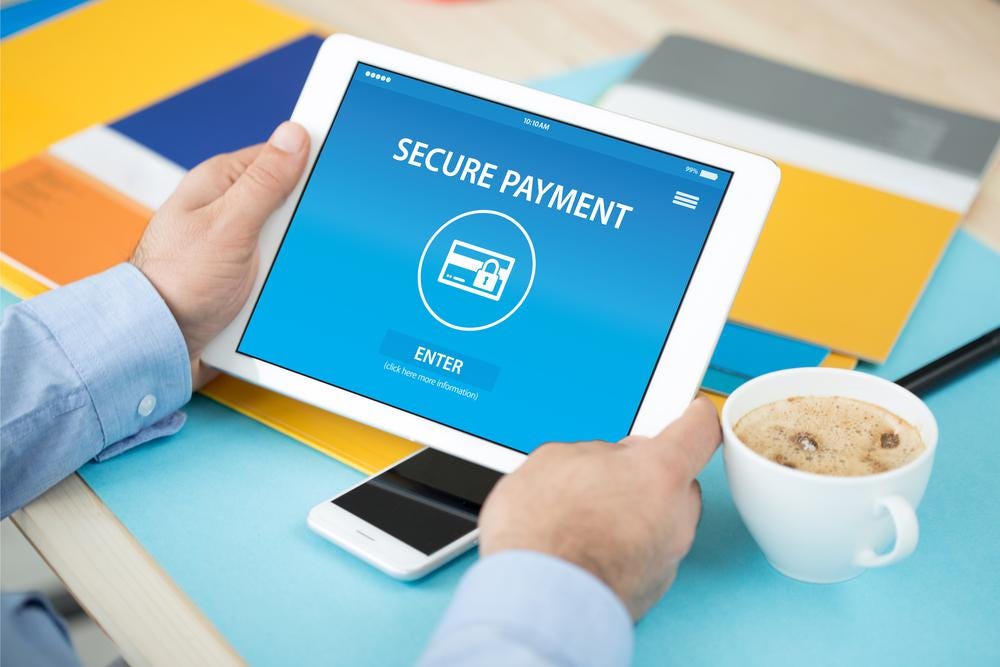We live in uncertain times. This week we’ve seen ransomware taking over hundreds of thousands of computers. Even Disney’s fifth installment of Pirates of the Caribbean is being held by hackers, according to BuzzFeed.
The more we integrate our business and financial systems, the more we open up the potential for business improvement but also the potential for system vulnerability and worry.
WePay, a provider of integrated payments for online platforms, knows that to serve their customers (and their customer’s end consumers) they need better data. WePay helps over 1,000 companies embed processing and revenue-related integrations into their own platforms including companies like Constant Contact, GoFundMe, MeetUp and more.
In April, WePay enlisted Survata, an independent research firm, to interview more than 505 self-identified small business owners and operators on their challenges with financial management and the impact online payments technologies have on their situations.
Depositphotos.com © garagestock
Technology opens up vulnerabilities
Chargebacks – 25% of SMBs have experienced a chargeback—a disputed transaction—that resulted in the business having to make good on the loss. This is a double whammy for a business because they are typically out of both their goods or services and the payment for them. And, if your business keeps racking up chargebacks, you may lose your payment processor.
Customer Payment Fraud – many small businesses experienced multiple instances of customer payment fraud, including 8% of those surveyed experiencing 10 or more instances. As a business owner, when something wrong happens to my money 10 times, it begins to be a serious distraction.
No type of business is immune – the study also found companies both young and old, those that sell products and services, as well as those that conduct commerce online and in-person were all affected by fraud and chargebacks.
Technology helps with finance and administrative efficiency
Smoother cash flow – Businesses that process customer payments directly within a platform (such as Shopify, Square or Zoho), report a 15% lower incidence of cash flow management challenges. The easier you make it for customers to pay you on the spot, or in an automated spot convenient to them, you are more likely to get payment faster. Faster payment usually results in more profit or faster growth.
According to the survey, only 33% of merchants get paid immediately, and typically only those that sell goods in-person. Even for those not selling physical goods in real-time, cash flow is increasingly being improved by payment platforms’ direct integration of loan solutions to enable the merchant to access immediate capital. That last fact isn’t a part of the survey but rather the volume of conversations I have with the exponentially growing SMB capital space. You may not have the customer’s payment immediately, but you have someone’s cash now which results in fewer bumps in the cash flow road.
Physical convenience & focus – SMBs handling payments online indicate they rarely have to visit their bank. That’s something bank relationship managers don’t like to hear, but SMBs feel that bank business takes them away from their actual business according to the survey. 58% of those surveyed said they visit their bank daily or weekly. That is time they could be selling, managin or innovating.
Do you have a plan for evolving your payment solutions?
Some of those surveyed mentioned trying to reduce the number of systems they use from up to five to only one or two. Certainly decreasing the number of systems a business is using for back office and payments functions reduces the number of access points and potential vulnerabilities.
Many companies admit they aren’t effectively using payment technologies. Those that are using them want systems to offer faster service and be more secure. We used to wait 45 days to get a check, then had to wait 3 days to get to the bank, and then wait a few more days for it to clear. Now we want immediacy—immediate money with complete security.
I guess that’s like when we went from dial-up internet to broadband and back again. Remember having to wait those 30 to 45 seconds while the modem dialed in and connected? Once we could connect in seconds, those 30 or 45 seconds were the longest seconds of our lives.
Compressing that payment exchange timeline is the real secret for any payment solution. Can you go from 43 day payment, to 7 day payment, to immediate payment? Now can you do it without paying exorbitant fees? Now can you do it with lower incidences of fraud that can further erode your profit?
I guess the question for SMBs isn’t ‘can you do it?’ Now the question is, ‘when will you decided there’s a greater risk associated with not doing it?’
Source: here
